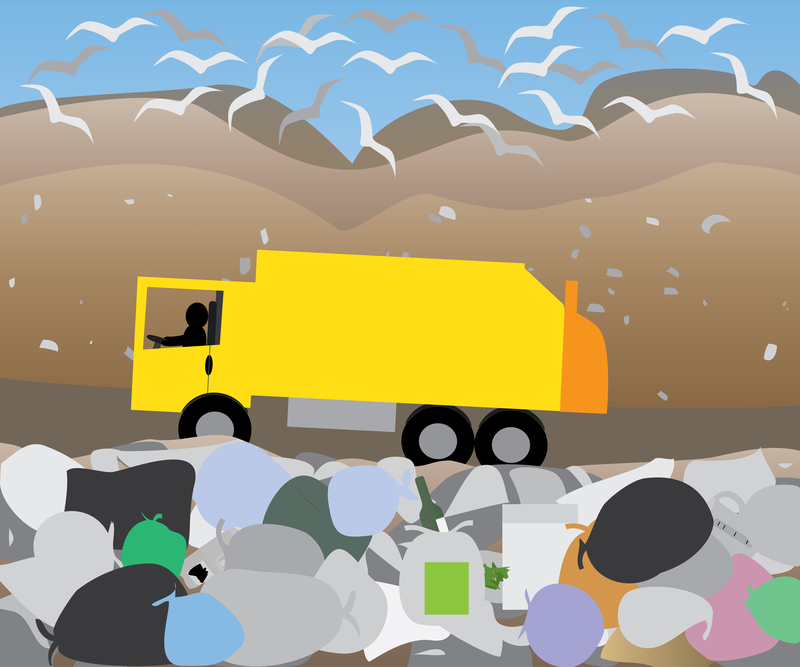Simplify Your Choices: Plastics to Skip
In the modern world, plastic products have become all but unavoidable. From food packaging to children's toys and water bottles, plastics are everywhere - but not all plastics are created equal. Growing environmental and health concerns have motivated people to rethink their relationship with plastic. If you're ready to simplify your choices and protect both your health and the planet, knowing which plastics to skip is essential. In this comprehensive guide, you'll find out which plastics to avoid, why they're harmful, and how to make eco-friendly decisions every day.

Understanding Plastic Types: The Resin Identification Codes
Before you can make informed choices about which plastics to skip, you need to understand the Resin Identification Codes (RICs). These numbers, usually found inside the recycling symbol on the bottom of containers, range from 1 to 7, each referring to different types of plastic. Here's a brief overview:
- 1 - PET or PETE (Polyethylene Terephthalate): Common in water and soda bottles, and some food packaging.
- 2 - HDPE (High-Density Polyethylene): Used in milk jugs, detergent bottles, and heavier food containers.
- 3 - PVC (Polyvinyl Chloride): Found in plumbing pipes, clear food packaging, toys, and shrink wrap.
- 4 - LDPE (Low-Density Polyethylene): Bags, six-pack rings, some bottles, and various plastic wraps.
- 5 - PP (Polypropylene): Yogurt cups, straws, some food containers, and packing tape.
- 6 - PS (Polystyrene): Disposable hot drink cups, takeout containers, and packing peanuts (Styrofoam).
- 7 - Other (Various): Includes plastics like polycarbonate, BPA-containing plastics, and bioplastics.
Why Not All Plastics Are Equal
Every type of plastic has different chemical properties and environmental impacts. Some are considered food-safe and relatively easy to recycle, while others contain hazardous chemicals that can leach into food or the environment. By learning to recognize these types, you'll be better equipped to skip toxic plastics and make healthier, more sustainable choices.
Plastics to Skip: The Main Offenders
When reducing your plastic footprint and safeguarding your health, certain types of plastics stand out for their toxicity and environmental hazards. Below, we take a deep dive into problematic plastics to avoid whenever possible.
1. Polyvinyl Chloride (PVC) - Resin Code #3
PVC is often used in pipes, shower curtains, shrink wrap, and some food packaging. It is commonly referred to as the "poison plastic" due to the multitude of toxic additives required for its production, including phthalates (known endocrine disruptors). When heated or burned, PVC releases carcinogenic dioxins and other hazardous fumes. PVC is difficult to recycle; most municipal programs won't accept it.
- Health Risks: May contain phthalates and lead, both of which are hazardous to human health, especially for children.
- Environmental Impact: Production and disposal release toxic chemicals into the air and water.
Skip PVC when choosing toys, food packaging, and anything that comes in contact with your skin or food.
2. Polystyrene (PS) - Resin Code #6
Polystyrene, commonly known as Styrofoam, is ubiquitous in food packaging, disposable cups, meat trays, and packing peanuts. Polystyrene is made from styrene, a possible human carcinogen. The lightweight material easily breaks into tiny pellets that are nearly impossible to clean up, making it a marine pollution nightmare.
- Health Risks: Potential for styrene leaching, especially when used for hot foods or liquids.
- Environmental Impact: Difficult and expensive to recycle; persists for centuries in landfills and oceans, frequently harming wildlife.
Whenever possible, avoid polystyrene in disposable foodware and packaging materials.
3. Polycarbonate/Bisphenol-A (BPA Plastics) - Resin Code #7: Other
Category "7 - Other" is a catch-all for plastics outside the #1-6 range. Many in this category contain polycarbonate, which is made using BPA, a well-known endocrine disruptor linked to developmental, reproductive, and metabolic health issues. Polycarbonate is often found in water bottles, sports equipment, baby bottles, and some food containers, though its use in baby products has been reduced in many countries.
- Health Risks: BPA can leach into food or beverages, especially when heated.
- Environmental Impact: Difficult to recycle and may release toxic substances as it breaks down.
Skip hard, clear plastics labeled "PC" or with a #7 recycling code unless they specify "BPA-free."
4. Avoid Single-Use Plastics
While the type of plastic used in single-use products may vary, the real problem is their disposability. Single-use bottles, bags, straws, cutlery, and wrappers create an enormous waste problem, much of which ends up in the environment, harming wildlife and polluting ecosystems.
- Health Risks: Potential chemical leaching; not designed for repeat use, which increases the risk of degradation.
- Environmental Impact: Most single-use plastics are not recycled and persist in environments indefinitely.
Whenever you can, opt for reusable options instead of single-use plastics.
Health Risks Associated with Certain Plastics
The main reason for making the choice to skip certain plastics is to protect your health and that of your family. Here's a summary of the potential health hazards found in the plastics to avoid:
- Hormone Disruption: Plastic additives like BPA and phthalates can mess with your body's hormone balance, leading to increased risks of infertility, obesity, and certain cancers.
- Chemical Leaching: Some plastics can shed chemicals into food or drink, especially when microwaved or exposed to sunlight and heat.
- Toxin Buildup: Heavy metals and dioxins released by certain plastics persist in the body and can contribute to chronic diseases.
By choosing safer alternatives, you significantly reduce your exposure to these hazardous substances.
Environmental Hazards: Why Skipping Plastics Matters
Plastics are clogging our oceans, filling our landfills, and contaminating soil and water. When you skip hazardous plastics, you're part of the solution:
- Less Pollution: Avoiding single-use and hard-to-recycle plastics means less plastic pollution in natural environments.
- Reduced Wildlife Harm: Animals mistake plastic for food, leading to injury, malnutrition, or death.
- Microplastics Contamination: Plastics break down into tiny particles ingested by marine life and, ultimately, humans.
Together, we can reduce the global plastic crisis, one choice at a time.
Plastics You Can Choose Instead
Now that you know which plastics to skip, let's focus on better alternatives that are safer for you and the planet:
- PET (#1): Generally considered food-safe for one-time use. Best for single-use recyclable food packaging if no other options exist.
- HDPE (#2): Durable, food-safe and widely recyclable. Great for water jugs, milk containers, and detergent bottles.
- PP (#5): Microwave-safe and relatively inert. Good for reusable food storage containers and drinking straws (prefer reusable, non-plastic if possible).
Whenever possible, choose glass, stainless steel, silicone, or other plastic-free alternatives for long-term use to further minimize plastic exposure.
Tips to Help Simplify Your Plastic Choices
Making the switch isn't as difficult as it may seem! Here's how to start skipping harmful plastics today:
- Learn the Codes: Get familiar with the resin codes and look for them on packaging before buying.
- Choose Reusables: Invest in reusable bottles, bags, and food containers.
- Avoid Microwaving Plastics: Always transfer food to glass or ceramic before reheating.
- Support Recyclable Packaging: Note if the product packaging is #1, #2, or #5 - these are the easiest to recycle.
- Buy in Bulk: Reduce packaging waste by purchasing larger sizes or bulk foods.
- Speak Up: Let your favorite brands and local stores know you prefer plastic-free or recyclable options!
Plastic-Free Swaps
- Cloth Bags in place of single-use plastic bags
- Glass or Stainless Steel Water Bottles over disposable plastic
- Beeswax Wraps as an alternative to cling film
- Bamboo Toothbrushes instead of plastic ones
- Bulk Shopping using your own containers
FAQs: Simplifying Your Plastic Choices
Which plastics are safe to use?
HDPE (#2) and PP (#5) are generally regarded as safe for repeated food use, while PET (#1) is safe for one-time use if not exposed to heat.
Are biodegradable plastics a good alternative?
*Biodegradable plastics* often require industrial composting to break down and may not fully decompose in landfill or marine environments. Research alternatives and local composting facilities before purchasing.
Why is microwaving plastic a problem?
Many plastics leach hazardous chemicals when heated. Even microwavable plastics can degrade, so always use glass or ceramic containers.
What are the most important plastics to skip?
PVC (#3), PS (#6), and polycarbonate/BPA-containing plastics (#7) should always be avoided for food and beverage storage, toys, and personal care, whenever possible.

Your Health, Your Planet: Make the Switch Today
The journey to a healthier home and a cleaner planet starts with simple choices. Now that you know which plastics to skip and which ones are safer, you can apply this knowledge every time you shop. Every skipped plastic straw, every reusable bag, and every glass container brings us one step closer to a sustainable, toxin-free future.
Start simplifying your life--choose wisely, skip unsafe plastics, and be an agent for positive change.
Further Resources
By developing a habit of checking plastic codes, opting for alternatives, and informing others, you become part of a global movement to reduce plastic waste and protect our health and the environment. Together, we can truly simplify our plastic choices!